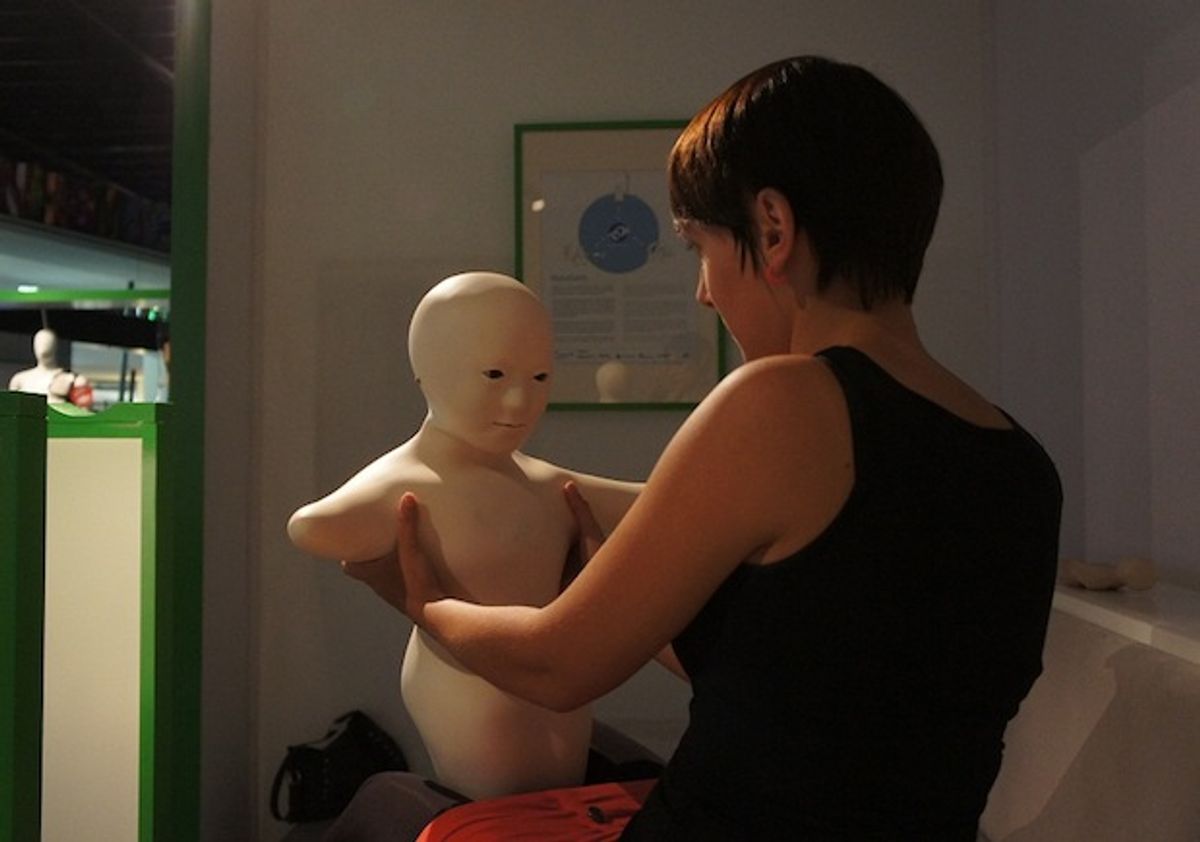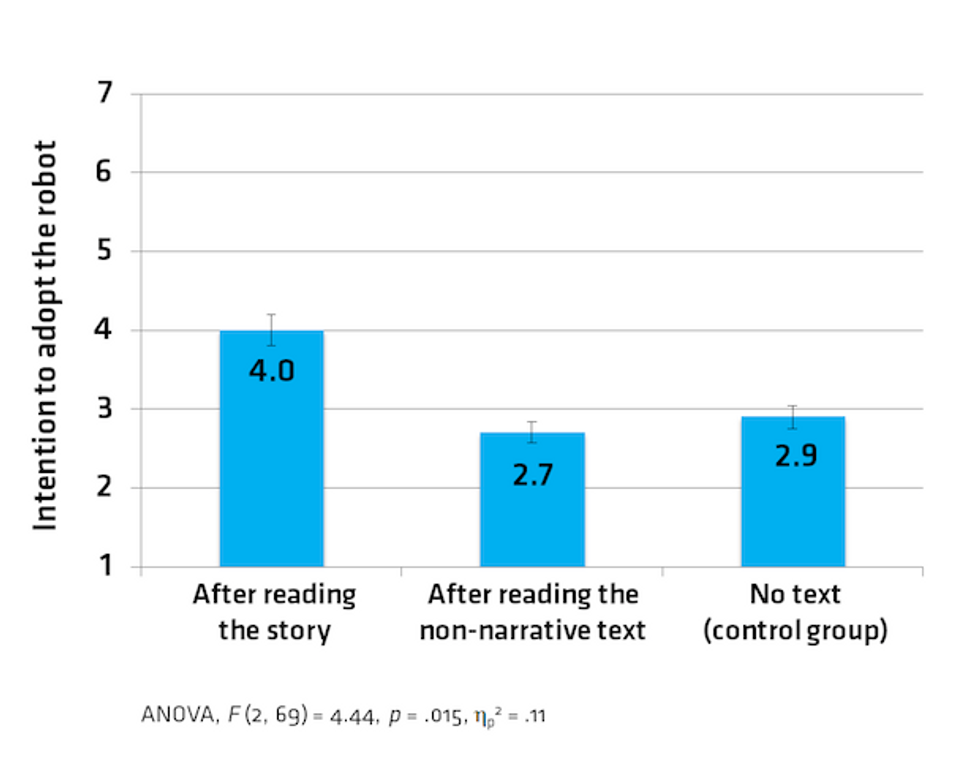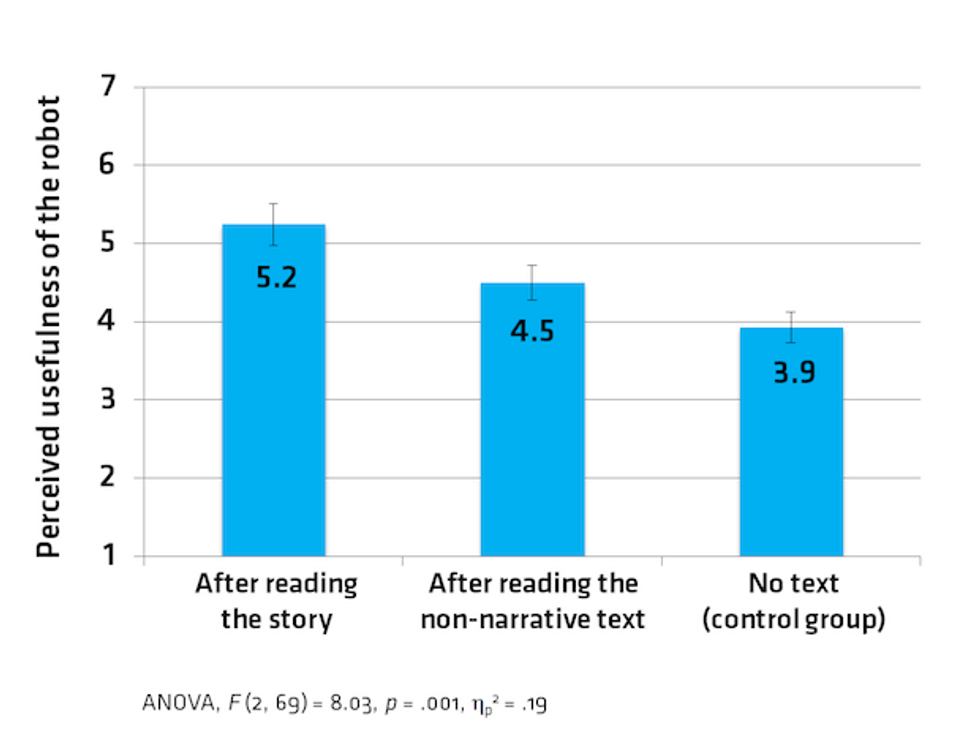This is the year 2250. At the space railway station on planet Telvikos, the small robot Telenoid R1 is waiting for his departure to Earth. It is already nighttime on Telvikos, and Telenoid can be recognized from afar by his bright silicone skin. His form and face somehow resemble people from planet Earth, although he is only as tall as a puppet. "Telenoid R1, please float to Chronoportation," the loudspeakers at the space railway station say. The robot sighs briefly and packs in his long-term memory cell for the journey.
Would you buy a Telenoid robot with a sci-fi background? According to research conducted at the Ars Electronica Futurelab, you're not only more likely to adopt a Telenoid, but also perceive it as more useful, when it's introduced with the story above.
At the Ars Electronica museum in Austria, Hiroshi Ishiguro’s Telenoid, a telepresence robot, was presented to visitors in three different ways. Visitors received a one-page introduction to the robot either with a narrative text, a functional description, or nothing at all. Both leaflets provided the same information about the robot’s appearance, functionality, and purpose. The only difference was whether it was presented as a story.
Check out the two excerpts below, one from the introduction in narrative form (story) and the other in non-narrative form (both were translated from German):
Narrative: "As a communication robot of the new interstellar time, one of Telenoid’s main tasks is to help people from planet Earth to maintain their human relationships. If two people on Earth would like to talk to each other or sense each other despite living far from each other—maybe even on different continents—then a robot of the Telenoid species is called from Telvikos and sent to the right time and place via Chronoportation."
Non-narrative: "Telenoid R1 is a communication robot that could become an alternative for mobile phones or video conferences within a few years time. With a remote-controlled Telenoid it will be possible for people of the future to keep close, personal contact with friends or family members, even though they might be far away or even living in another continent."
As you can see in the graphs below, visitors' perceptions and intentions toward the robot changed significantly after reading the narrative description of the robot.
"Narrative persuasion," a term used by media psychologists to describe storytelling as a means to get your point across, is nothing new. But this technique might be a simple way to bring useful technology to people that might not otherwise accept robots into their lives.
According to lead researcher Martina Mara, storytelling may even hold a greater power to making robots more integrated into society. "Our latest [unpublished] results suggest that even the famous uncanny valley could eventually be bridged by presenting a 'scary' robot as a story character," she says.
Would WALL-E, C-3PO and other character robots be as lovable if we didn't know their story? Mara suggests that further research with other robots is needed to check whether the results can be generalized, and explore the underlying psychology behind it.
The study "Tell Me Your Story, Robot: Introducing an Android as Fiction Character Leads to Higher Perceived Usefulness and Adoption Intention" by Martina Mara, Markus Appel, Hideaki Ogawa, Christopher Lindinger, Emiko Ogawa, Hiroshi Ishiguro, and Kohei Ogawa of Ars Electronica Futurelab, University of Linz and Osaka University, was presented at Human Robot Interaction 2013 in Tokyo.
Images: Martina Mara






